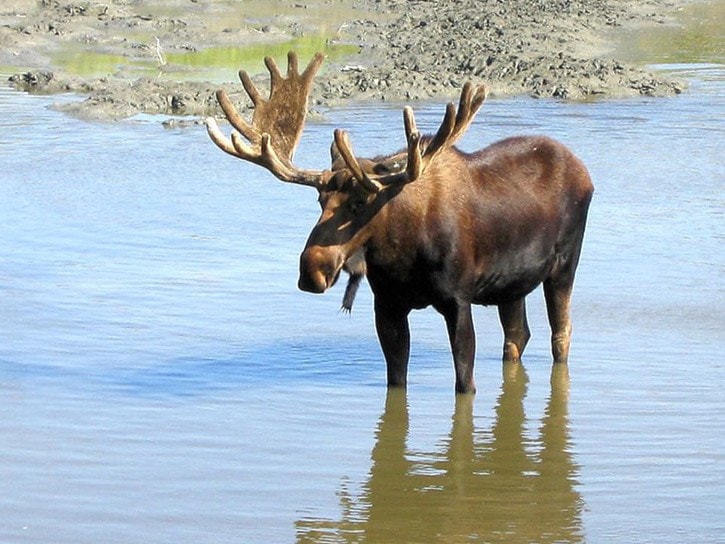The BC Wildlife Health Program is once again asking for help assessing the effects of winter ticks on the province's moose population as part of its annual moose winter tick surveillance program.
The program relies on observations from wildlife professionals and the general public to monitor the number of animals with hair loss, assess the amount of hair loss on each animal and estimate the overall prevalence and distribution of winter ticks.
Tick infestations can sometimes result in severe behavioural and physiological changes and directly impact the survival rates of moose, especially in younger animals. Winter ticks can also have a significant impact on moose populations when climate and habitat conditions promote high tick numbers.
Winter tick infestations are generally observed on moose from February through April. This type of tick goes through three life stages over the winter on one moose and there can be as many as tens of thousands on one animal.
As the ticks mature, they feed on the blood of the animal and can cause anaemia. In late winter, tick irritation causes moose to scratch and groom themselves excessively, resulting in hair loss and less time spent foraging, which can lead to weight loss. The extent of hair loss on a moose can be observed easily from a distance and is a rough indicator of how many ticks are present.
Anyone interested in contributing to this surveillance program can fill out a survey online or, alternatively, the electronic survey can be saved and completed on your computer, tablet or mobile device and returned via email to: FLNRMooseTickSurvey@gov.bc.ca
Survey forms and background information can be found on the moose winter tick program page at:http://www2.gov.bc.ca/gov/content?id=908512FE406D4699B303FD4463A69523.
Participants are asked to observe the amount of hair loss, if any, occurring on moose and check the survey box that most accurately describes the animal's appearance. There are five categories ranging from no hair loss to more than 80 per cent loss of winter hair.
Findings of the surveillance program will contribute to the Provincial Moose Research Program, which was initiated in 2013 to investigate factors influencing moose populations in B.C.
